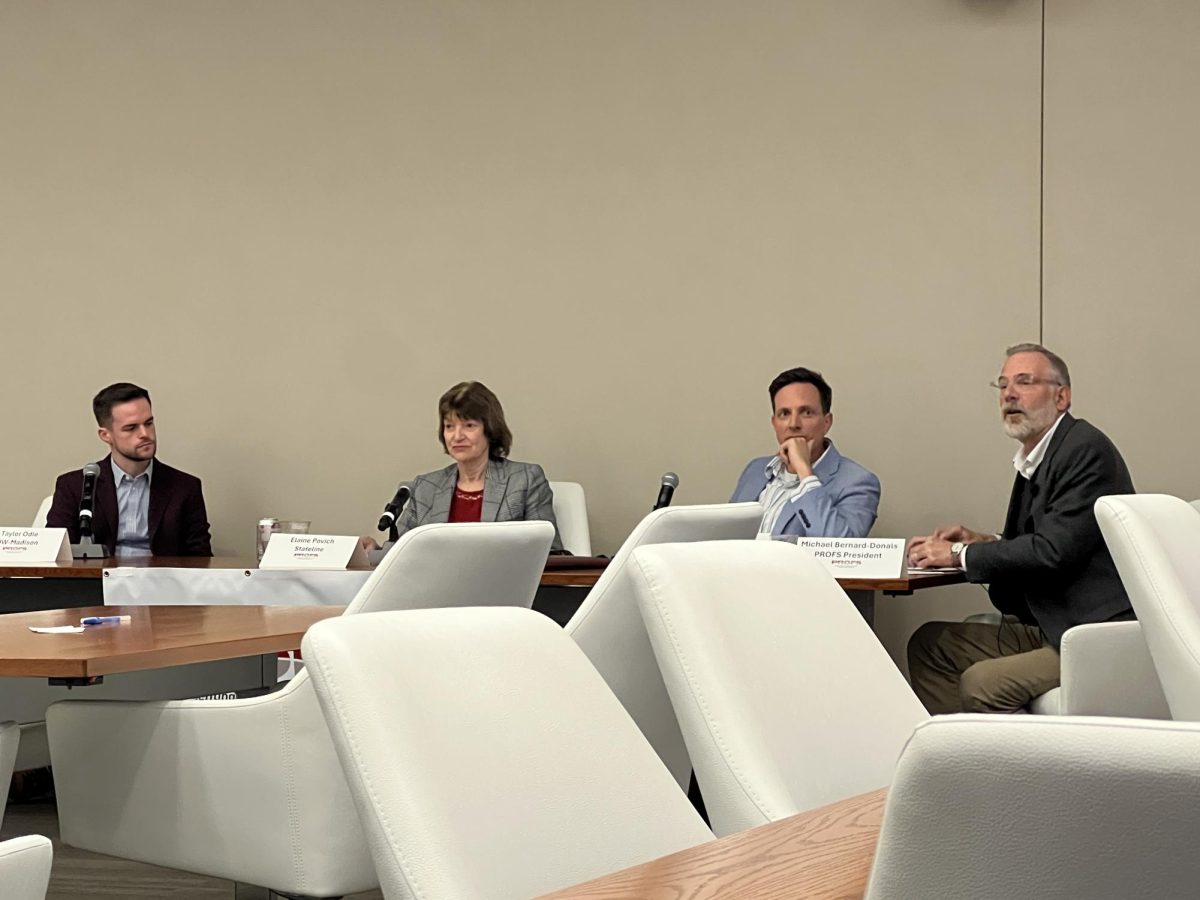Known nationwide as a party school, University of Wisconsin is addressing the high-risk drinking among students of all ages.
Binge drinking and its consequences are a problem at just about every university in the country, Sarah Van Orman, executive director of University Health Services, said. However, there is data to suggest the problem at Madison is significant and “probably worse” than at other institutions, she said.
“Our students come to campus drinking more and by the time we resurvey them at about six weeks [through AlcoholEdu], they’re much more likely to have become problematic drinkers than students at other universities,” Van Orman said.
For UW students, 75.72 percent admitted to drinking before enrolling in college, in comparison to 65.95 percent of students from other large public universities that admitted to drinking before starting college, the 2013 AlcoholEdu summary reported.
Additionally, 41.81 percent of UW students become high-risk drinkers after starting college compared to 27.18 percent of students attending other large public universities, the 2013 AlcoholEdu summary reported.
There have been studies in the past that have found a direct relationship between the density of alcohol establishments and binge drinking, Richard Brown, professor in the Department of Family Medicine, said.
One of these studies, the 2013 Prevention Status Report, reported greater alcohol density directly correlates with excessive drinking.
“It really helps to decrease the concentration of alcohol establishments,” Brown said. “There are lots of things we could do if we really wanted to get serious to address the alcohol issues on campus.”
Most of the establishments where students can drink are located on the east side of Madison, with close to 70 in a one-fourth mile radius of each other on campus, the Chronicle of Higher Education reported.
The Alcohol Density Licensing Ordinance was issued in 2010 to prohibit new bars opening downtown in order to decrease the amount of alcohol-related crimes on campus, the Chronicle reported.
When the ordinance was unsuccessful in lowering crime rates, restrictions were lifted allowing new establishments to open, such as movie theaters and arcades, the Chronicle reported.
A higher density of alcohol establishments has shown a correlation with an increase in violence, alcohol poisoning and lower work productivity, the 2014 Madison and Dane County Health Impact Assessment reported.
“The only way [a study] would have effect is if policy makers took it to heart and actually changed policy so that we wouldn’t have the density of drinking establishments that we have,” Brown said.
Less common but more severe consequences of high-risk drinking include overnight detox and higher numbers of sexual assault, Van Orman said.
Throughout the 2013-2014 academic year, the Madison Police Department and University of Wisconsin Police Department transported 170 students to detox or the emergency room due to excessive drinking, according to the UW Alcohol Information for Campus website.
“We know that at UW-Madison somewhere between 150 to 200 students every year have to be taken to detox,” Van Orman said. “When a student is transported to detox that means their alcohol level is high enough that they’re at risk of dying.”
The vast majority of sexual assaults at UW are associated with alcohol, Van Orman said. Alcohol creates an environment where it’s more difficult for both bystanders and victims to recognize the situation.
A major concern for UW is the number of students that report being “problematic drinkers,” meaning students who drink more than eight drinks for women and 10 drinks for men.
Students tend to accept that alcohol abuse is just a part of the college experience which makes it a challenging problem to address, Van Orman said.
Brown said there are research-based solutions that will help discourage high-risk drinking. The most potent thing the university could do would be to increase alcohol taxes, he said.
“It wouldn’t be popular on campus but there are many studies that show when [campuses] substantially increase alcohol taxes and make alcohol more expensive, many young people will drink less and reduce alcohol related deaths among young people,” Brown said.
The UW Population Health Institute issue brief reported that a 10 percent increase in the price of beer lowers the demand for beer by 4.6 percent.
Because of the extent of this problem, punishments are harsh for underage students caught drinking excessively.
Legally, a student caught drinking underage will be charged $263.50 and possession of a fake ID is $515.50, according to the UW Alcohol Information for Campus website.
After a student is legally cited, they may be in violation of the UW System Administrative Code. In this case, the student will be referred to the dean of students office and may receive punishment ranging from disciplinary probation to expulsion, depending on the extent of the citation, according to the UW Alcohol Information for Campus webpage.
Students will also be required to take an alcohol education course, costing $125 and mandated by the dean of students offices, according to the UW Alcohol Information for Campus webpage.
















